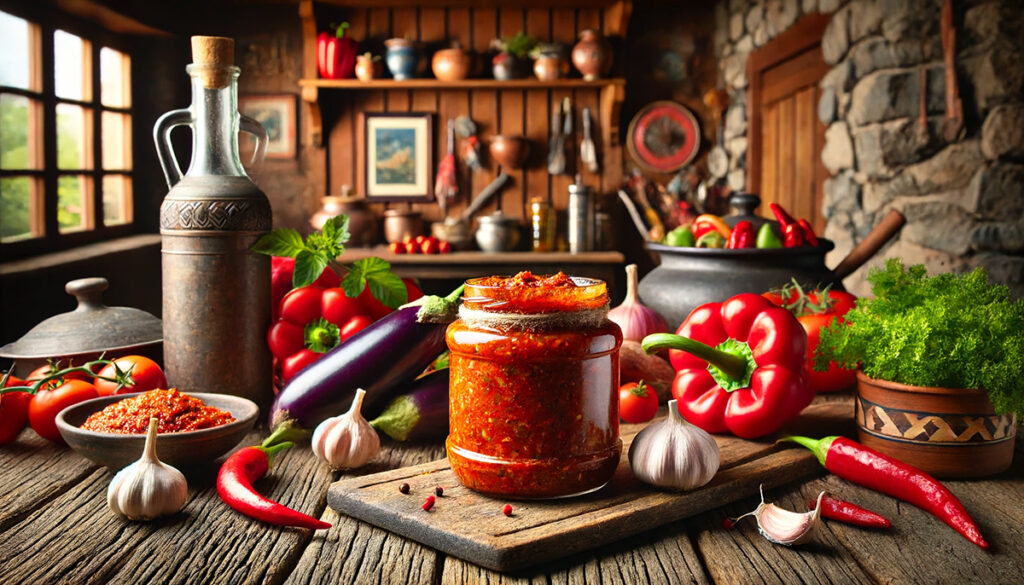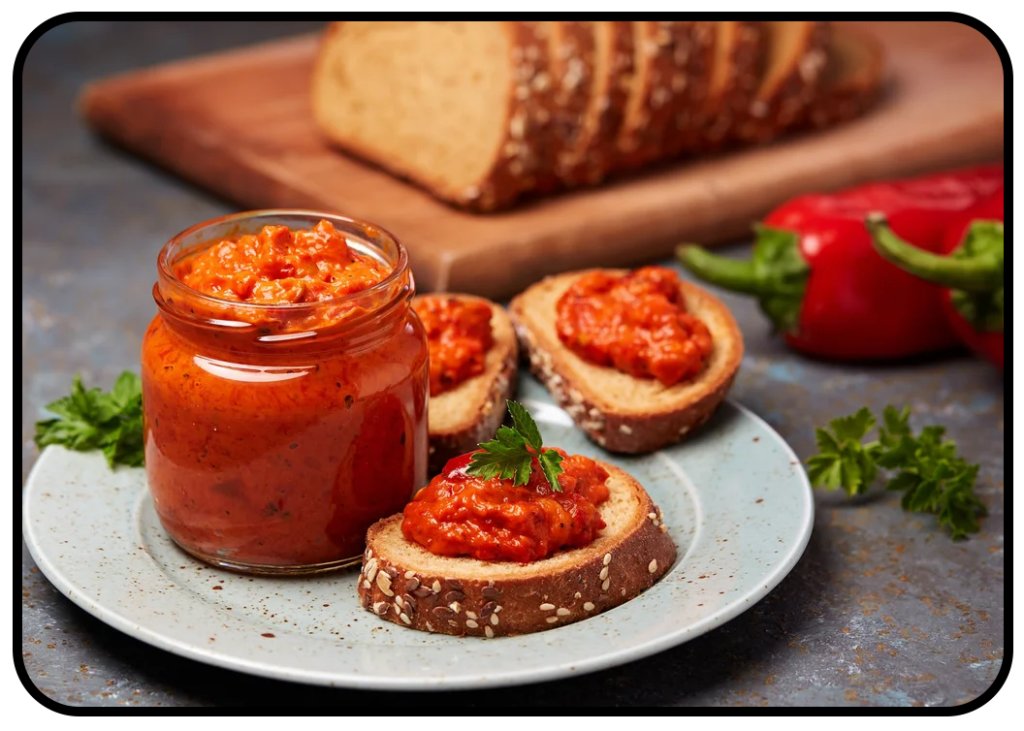
Albanian Pastiçe: Easy baked pasta recipe
Discover Albanian pastiçe: bucatini with feta and eggs baked into a golden pie—simple, nourishing and perfect for hectic days.
Are you looking for a flavorful and versatile sauce to elevate your dishes? Meet Ajvar, a traditional sauce from the Balkans that is gaining popularity. In this article, we not only share the rich history and health benefits of Ajvar, but also provide you with a step-by-step recipe to make this delicious sauce yourself. Whether you are an experienced cook or a beginner in the kitchen, you will make your own Ajvar in no time with this simple recipe. Read on and discover how to add this flavor enhancer to your culinary repertoire!

The national cuisines from the Balkans are often still unknown territory for the Dutch. The countries have suffered under communist rule for too long, which did not invite cheerful holiday snapshots.
How different things are today: most countries welcome Dutch tourists with open arms, and gradually, some local dishes are becoming more popular. For example, we at Aljeta have previously brought qofte and petulla to your attention.
Ajvar is reported to be a flavor enhancer, but it is actually more of a side dish or chutney made from red peppers, eggplants, and (sometimes) spices. Ajvar is both spicy and flavorful.
Ajvar originally comes from Macedonia but spread across the entire Balkans, including Albania, only after World War II. Autumn is the traditional period to make this dish because all the ingredients are ripe at that time. By preserving it, the population has access to vegetables throughout the winter, containing the necessary vitamins.
The term ajvar (Ajвар) is a remnant of the Ottoman (Turkish) rule over the area. The dish was once called havyar, which meant ‘(salted) caviar.’ Ajvar does not contain caviar, but it is a poor man’s version of it.
Ajvar is not only tasty but also healthy:

Ajvar: A delightful Balkan sauce made from roasted red peppers and eggplant, enriched with extra virgin olive oil, brown sugar, and spices. This flavorful and versatile sauce can be used as a dip, spread, or as a tasty addition to various dishes.
Cuisine: Balkan
Course: Side dish, Spread, Sauce
Keyword: Ajvar recipe, Traditional Balkan Sauce, Making Ajvar
Smoky flavor: For an extra flavor dimension, you can roast the vegetables on a charcoal grill for a subtle smoky taste.
Adjustments: Add extra ingredients like garlic, onion, or chili pepper to adjust the flavor of your ajvar.
Ajvar is very versatile and can be served in various ways:
When ajvar is canned in sterilized jars and properly sealed, it can stay good in a cool, dark place for more than a year. Once opened, ajvar should be stored in the refrigerator and consumed within a month.

Discover Albanian pastiçe: bucatini with feta and eggs baked into a golden pie—simple, nourishing and perfect for hectic days.

The flag of Albania is more than just red and black. This article explores the deeper meaning behind its national symbols – from the double-headed eagle to the traditional ‘Shqiponja’ hand gesture, the unique Albanian language, and the country’s rich cultural heritage. A story of pride, identity, and history captured in one powerful symbol.

This homemade chili oil with Extra Virgin olive oil is a flavor bomb that’s also great for your health. Easy to make and incredibly versatile.

Albania is home to thousands of medicinal plants. Discover how traditional herbal wisdom not only impacts lives, but also shapes a unique export industry.

Despite an increase in risk factors such as an unhealthy diet and less physical activity, cardiovascular mortality in Spain remains surprisingly low. What explains this mysterious ‘Spanish Paradox’? Discover how a key element of the Mediterranean diet plays a crucial role.

The Albanian olive harvest is severely impacted by a labor shortage, leading to a significant decline in olive oil production and exports. In the first nine months of 2024, exports dropped by 60% compared to the same period in 2023. This not only poses challenges for the domestic market but also hinders Albania’s position as an emerging olive oil producer.